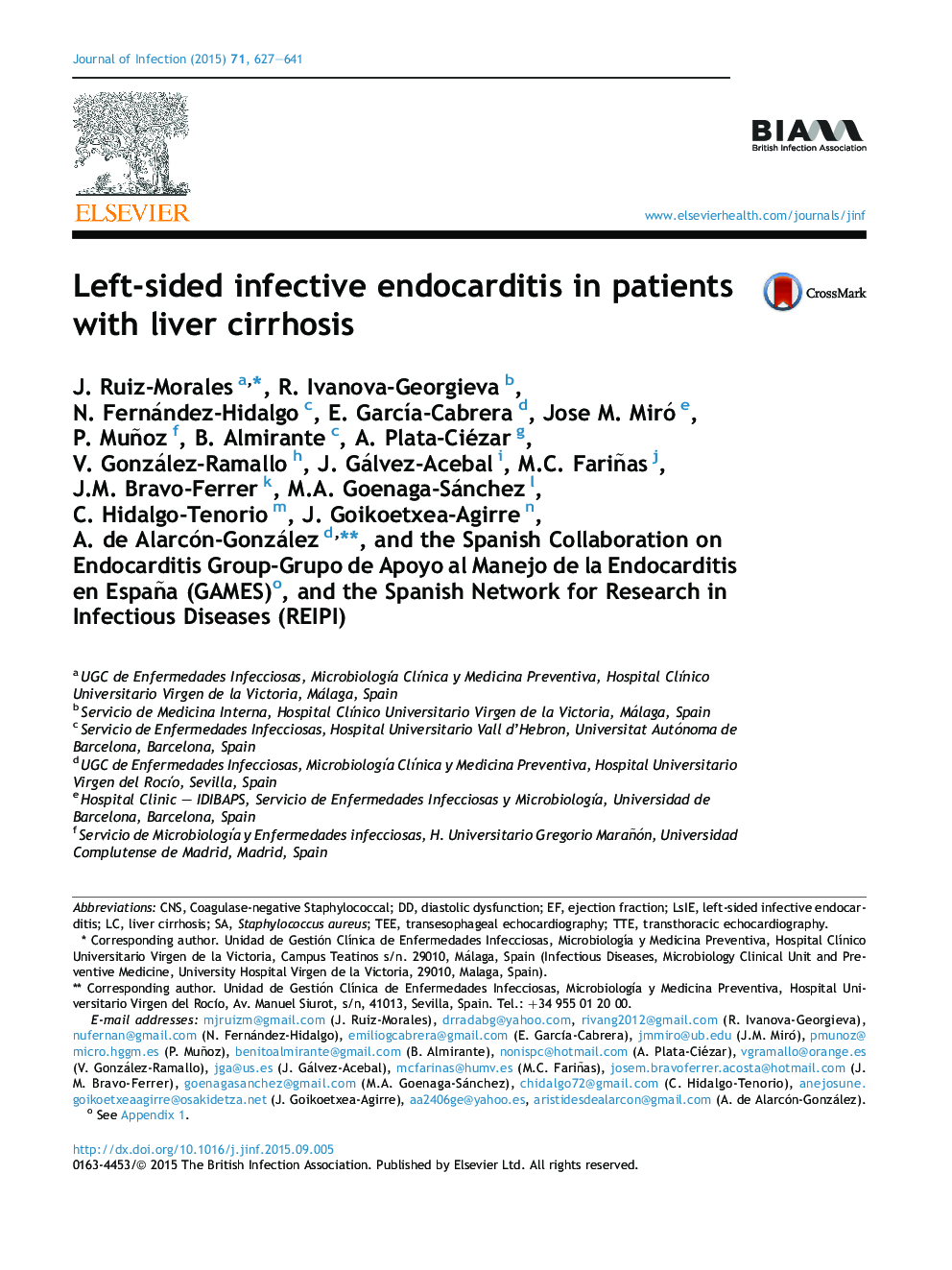| Article ID | Journal | Published Year | Pages | File Type |
|---|---|---|---|---|
| 6122985 | Journal of Infection | 2015 | 15 Pages |
â¢The behavior of left-sided infective endocarditis in liver cirrhosis is described.â¢We analyze the risk factors related with inpatient mortality.â¢We evaluate the role of surgery related with Child-Pugh stages.â¢The prognosis in stage A was similar to that of patients without cirrhosis.â¢The prognosis was better for patients in stages A and B who underwent early surgery.
SummaryObjectiveTo evaluate the course of left-sided infective endocarditis (LsIE) in patients with liver cirrhosis (LC) analyzing its influence on mortality and the impact of surgery.MethodsProspective cohort study, conducted from 1984 to 2013 in 26 Spanish hospitals.ResultsA total of 3.136 patients with LsIE were enrolled and 308 had LC: 151 Child-Pugh A, 103 B, 34 C and 20 were excluded because of unknown stage. Mortality was significantly higher in the patients with LsIE and LC (42.5% vs. 28.4%; p < 0.01) and this condition was in general an independent worse factor for outcome (HR 1.51, 95% CI: 1.23-1.85; p < 0.001). However, patients in stage A had similar mortality to patients without cirrhosis (31.8% vs. 28.4% p = NS) and in this stage heart surgery had a protective effect (28% in operated patients vs. 60% in non-operated when it was indicated). Mortality was significantly higher in stages B (52.4%) and C (52.9%) and the prognosis was better for patients in stage B who underwent surgery immediately (mortality 50%) compared to those where surgery was delayed (58%) or not performed (74%). Only one patient in stage C underwent surgery.ConclusionsPatients with liver cirrhosis and infective endocarditis have a poorer prognosis only in stages B and C. Early surgery must be performed in stages A and although in selected patients in stage B when indicated.
